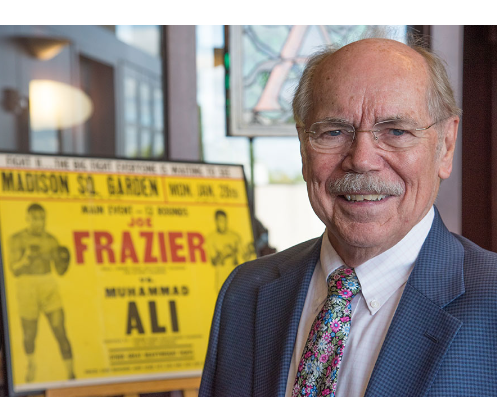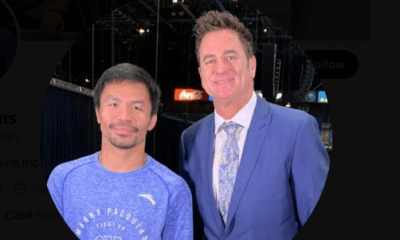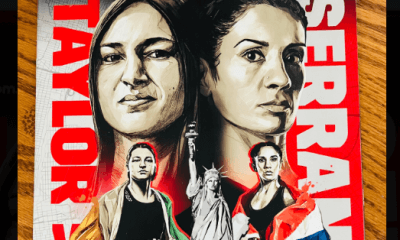Book Review
Thomas Hauser’s Literary Notes: Dave Kindred and Robert Seltzer

Midway through reading Dave Kindred’s most recent book – My Home Team (published by Public Affairs) – I said to myself, “Kindred is such a good writer.”
Kindred, now 83 years old, has won virtually every sports journalism award worth winning. My Home Team is a memoir that weaves together three love stories – Kindred and Cheryl Liesman (his high school sweetheart and wife for more than fifty years) . . . Kindred and sports journalism . . . And late in life, Kindred’s immersion in a high school girls basketball team (the Lady Potters of Morton, Illinois).
The book is divided into two parts. The first (“Act One) details Dave’s career as a sports journalist and his personal life from early childhood through his retirement from big-time journalism. “Act Two” deals with the Lady Potters and the tragic stroke that ravaged Cheryl, leaving her bedridden and unable to control her environment or speak more than a few words in her final years. A short coda puts the final pieces in place.
Kindred wrote more than six thousand columns during his years at the Louisville Courier-Journal, Washington Post, and Atlanta Journal-Constitution. As his reputation grew, he covered virtually every major sporting event in the way he chose to cover it.
“Newspapers were never better nor did they matter more than in those days when they were rich with cash and ambition,” Dave writes. “Before the Internet, before Facebook, Twitter, and Instagram, newspapers were important in ways that social media could never be – as trusted messengers of the day’s news.”
“I was not a fan of a team, a coach, a player,” Kindred continues. “That relationship could only end badly. I was a fan of reporting and writing. Journalists root for stories. Whatever happens, good or bad, just make it something we can write. Sometimes we get lucky and the best story is the one we want to write.”
I met Kindred in 1989 when I was researching a biography of Muhammad Ali. Dave had just written a remarkable piece of investigative journalism about a lawyer named Richard Hirschfeld who was exploiting Ali and imitating Muhammad’s voice in telephone calls to members of Congress. It was a notable example of the ways in which Ali was being used by hustlers to advance their own economic interests. Kindred pieced the story together brilliantly. In later years, I got to know him better as a writer and a person.
Dave was with the young Ali in Louisville when he was king of the world, the old Ali in Las Vegas when he was brutalized by Larry Holmes, and each incarnation of Ali in between. He wrote that Ali in his prime was “as near to living flame as a man can get” and added thoughts like:
* “You could spend twenty years studying Ali and still not know what he is or who he is. He’s a wise man and he’s a child. I’ve never seen anyone who was so giving and, at the same time, so self-centered. He’s either the most complex guy that I’ve ever been around or the most simple. And I still can’t figure out which it is. We were sure who Ali was only when he danced before us in the dazzle of the ring lights. Then he could hide nothing.”
* “I never thought of Ali as a saint. He was a rogue and a rebel, a guy with good qualities and flaws who stood for something. He was right on some things and wrong on others, but the challenge was always there.”
* “Rainbows are born of thunderstorms. Muhammad Ali is both.”
In 2010, when Kindred’s sportswriting days on the national stage came to an end, he and Cheryl moved back to their roots in rural Illinois. They bought a house on a big plot of land and envisioned a comfortable old age surrounded by family and friends.
Then, in December 2010, Dave went to a Lady Potters basketball game to see the daughter of friends play.
Three years earlier, Kindred recalls, “Carly Jean Crocker [had been] thirteen years old, blonde and blue-eyed, tall and trim in blue jeans, stylish in a denim jacket and red canvas sneakers.”
This was long before Caitlin Clark set the basketball world ablaze.
A neighbor had asked, “Carly, are you going to be a cheerleader?”
“No,” Carly answered, “I’m going to be the one you cheer for.”
Now Carly was on the Lady Potters roster.
“I climbed three rows up at the Morton High School Gym,” Kindred recounts. “The game was the first sporting event for which I ever bought a ticket. Though I resisted saying the word, friends counted me as, quote, retired. With newspapers and magazines dying in the Digital Age, there was also the unhappy circumstance of nobody looking to coax geezers out of retirement. Without a press credential for the first time since I was seventeen, I was an official spectator.”
Before long, Dave was hooked. He began writing about the Lady Potters for the team website and Facebook. “I had no agenda,” he recalls. “It got me out of the house. It made me pay attention to something other than growing old.”

His pay?
Before each outing, the team gave him a box of Milk Duds to eat in the stands during the game.
“But I like Milk Duds,” Kindred notes.
Then tragedy struck.
Cheryl was the only girlfriend Dave ever had. Her place in his heart was sealed at their high school senior prom when the awkward young man confessed, “I’m a very bad dancer.”
“She took my hand and squeezed it,” Dave told me decades later. “And then she said, ‘Bad dancing is better than no dancing.'”
On December 6, 2015, Dave and Cheryl were at the movies. She was eating popcorn when a massive stroke hit.
“It’s like a bomb exploded in her brain,” one of her doctors said.
For the next five years, Cheryl lay in bed in a nursing facility – in Kindred’s words, “her spirit gone, her body smaller and smaller, life disappearing.” He made the 36-mile round-trip from their home to her bedside more than a thousand times.
“Some days, I don’t even think she knows who I am,” Dave told me after one of his visits. “But I hold her hand and talk to her. I hope it comforts her. And it makes me feel better to be there.”
Cheryl died on June 24, 2021.
Meanwhile, the Lady Potters had become a very good basketball team. During one five-year stretch, they won 164 games and lost only 13, leading Kindred to refer to them as “the Golden State Warriors, only with ponytails.” In 2015, 2016, 2017, and 2019, they won the Section 3A Illinois State Championship.
“Basketball is beautiful when people move the ball quickly and surely to places where it can be put in the basket easily,” Kindred writes in My Home Team as he looks back on his journey. “It is beautiful, too, when people play defense as if it is the most fun a teenage girl can have. A couple of years in, I understood my real reason for writing about the Lady Potters. No professional athlete ever introduced me to his parents or asked about my family’s well being. Slowly, I understood that I cared about the Lady Potters games in ways I had not cared about all those that came before. We met good people and shared good times. I loved the little gyms, loved the games. [And] writing was my life. Writing anything gave me a reason to stay alive.”
Kindred’s writing is as smooth as silk with some sharp barbs woven into the fabric. In that vein, I’ll close this review with an anecdote from My Home Team that Dave shares in chronicling his days as a national journalist.
Jenny Keller (a reporter for the New York Daily News) was assigned to cover the New York Jets and found herself in the team locker room confronted by a huge defensive lineman who held his male organ up for inspection and asked, “Do you know what this is?”
“Looks like a penis,” Jenny answered. “Only smaller.”
—
Ted Williams – arguably the greatest hitter of all time – had a Mexican-American mother. But he rarely talked about that part of his heritage. After retiring from baseball, Williams said of growing up in San Diego, “If I had my mother’s name, there is no doubt I would have run into problems in those days, the prejudices people had in Southern California.”
As Williams’s mythic career was winding down, a 17-year-old named Ritchie Valens from California’s San Fernando Valley recorded a love song called Donna – one of the most popular love songs of its time. One year later, his life was cut short when he died in a plane crash with Buddy Holly and J.P. Richardson. Valens’s real name was Richard Valenzuela. But he’d been told to anglicize it so his records would be more saleable to mainstream America.
This is the world that Robert Seltzer was thrown into at age ten when he moved with his parents from El Paso to Bakersfield, California. His mother was a Mexican woman from Chihuahua. His father was a “gringo,” originally from Cleveland, who preferred Mexican culture to his own and took the pen name “Amado Muro” for much of his writing.
Amado Muro and Me recounts Seltzer’s first year in Bakersfield when he experienced racism for the first time and was mercilessly picked on as the only Mexican-American in his fifth-grade class. Through the prism of that year, he explores his relationship with his father, wrestles with his own self-identity, and recreates the multi-cultural world that he came from.

Seltzer is known to boxing fans as a past recipient of the Nat Fleischer Award for Career Excellence in Boxing Journalism. There’s not much boxing in this book. But it’s a wonderful read with a particularly reprehensible bully. And it reinforces the view that families are families regardless of race, religion, or national origin.
Thomas Hauser’s email address is thomashauserwriter@gmail.com. His most recent book – MY MOTHER and me – is an intensely personal memoir available at Amazon.com. https://www.amazon.com/My-Mother-Me-Thomas-Hauser/dp/1955836191/ref=sr_1_1?crid=5C0TEN4M9ZAH&keywords=thomas+hauser&qid=1707662513&sprefix=thomas+hauser%2Caps%2C80&sr=8-1
In 2004, the Boxing Writers Association of America honored Hauser with the Nat Fleischer Award for career excellence in boxing journalism. In 2019, Hauser was selected for boxing’s highest honor – induction into the International Boxing Hall of Fame.
To comment on this story in the fight Forum CLICK HERE
-

 Featured Articles3 weeks ago
Featured Articles3 weeks agoVito Mielnicki Jr Whitewashes Kamil Gardzielik Before the Home Folks in Newark
-

 Featured Articles4 days ago
Featured Articles4 days agoResults and Recaps from New York Where Taylor Edged Serrano Once Again
-

 Featured Articles1 week ago
Featured Articles1 week agoFrom a Sympathetic Figure to a Pariah: The Travails of Julio Cesar Chavez Jr
-

 Featured Articles3 days ago
Featured Articles3 days agoResults and Recaps from NYC where Hamzah Sheeraz was Spectacular
-

 Featured Articles4 weeks ago
Featured Articles4 weeks agoCatching Up with Clay Moyle Who Talks About His Massive Collection of Boxing Books
-

 Featured Articles1 week ago
Featured Articles1 week agoCatterall vs Eubank Ends Prematurely; Catterall Wins a Technical Decision
-

 Featured Articles4 days ago
Featured Articles4 days agoPhiladelphia Welterweight Gil Turner, a Phenom, Now Rests in an Unmarked Grave
-

 Featured Articles3 weeks ago
Featured Articles3 weeks agoMore Medals for Hawaii’s Patricio Family at the USA Boxing Summer Festival



















